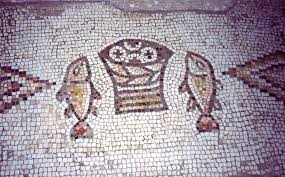 When The Saint’s Mistress was first published, a fellow author predicted that my readers would teach me surprising things about my book and about myself.
When The Saint’s Mistress was first published, a fellow author predicted that my readers would teach me surprising things about my book and about myself.
I found that to be true last month when I participated in an author panel at Shaler Library here in Pittsburgh, and the moderator, Bill Rock, asked me what I learned about myself in the process of writing my book.
One of the hardest sections of the book to write was the chapter where my main character, Leona, converts to Christianity. Like many 4th-century North Africans, Leona was essentially a pagan. Her father worshiped the old Berber gods. Her lover, the future Saint Augustine, was first a Manichean and then a neo-Platonist. Although Christianity was beginning to consolidate its dominance in the Mediterranean in the 4th century, the area was still a swirl of competing faiths.
It would have been easy to write Leona’s conversion as revelation. But I was writing historical fiction, not a Christian polemic. Revelation works in theology, but fiction requires motivation. I wanted Leona’s acceptance of Christ to ring true for her as a character.
You can believe the Christian story (as I do), and still understand that people accepted the faith for lots of different reasons. For some, like my character Quintus, the Church was a career, a path to power. In The Rise of Christianity, Rodney Stark emphasizes social factors. As more of your neighbors and friends became Christians, it became more familiar and appealing. Moreover, Stark argues, Christians took care of each other.
I had written Leona as a young woman with a strong sense of social justice and a heart for the poor of the Empire, so oppress and exploited by their Roman masters. Although raised to the middle class by her relationship with Aurelius Augustinus, she began her life in the peasant class and never lost her sympathy for them.
Leona was attracted to the Church by her relationship with other Christians, in the Stark model. She was impressed by how Christians cared for the poor and the sick. A Christian priest provided medical care to her son when most doctors were abandoning plague-infested Milan. But what, I wondered, would finally open her hear to Christ? I pondered that for weeks before I finally came to an answer that felt true to me: Christ was a peasant himself. That, I felt, would be the key to Leona’s heart.
And so, years later, when Bill asked me what I learned about myself from writing my book, I knew what to say. In writing about what Christ meant to Leona, I learned what is the heart of my own faith. It is the notion that our God took the form not just of a man, but of a man of the lower class, that he welcomed the children, the poor, the sick, the sinners, the criminals, the most despised. When I knew what would be most important to Leona, I discovered what my faith most deeply means to me.

Thanks much for sharing the personal insight gained by virtue of the writing process when you authored “The Saint’s Mistress”. It must be tremendously fulfilling to affirm your faith in this manner! I am wishing you and your family a joyous, healthy and prosperous 2017! I greatly appreciate the care and thought that you put into your blog and I look forward to the perspectives that you will (continue to) share via your future posts… Keep on Keepin’ on!